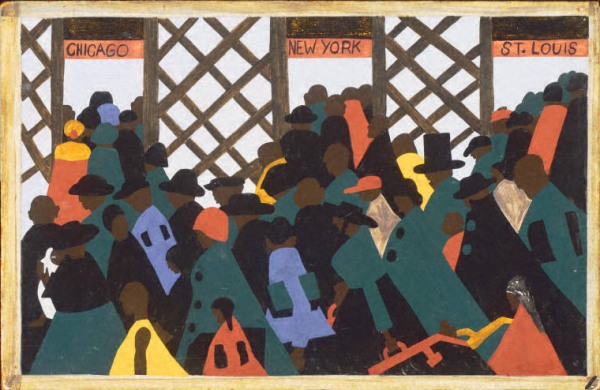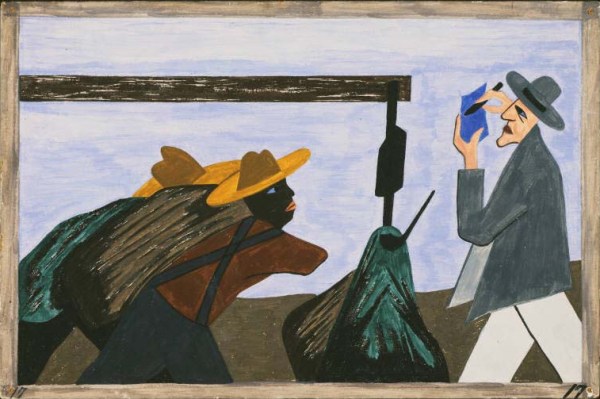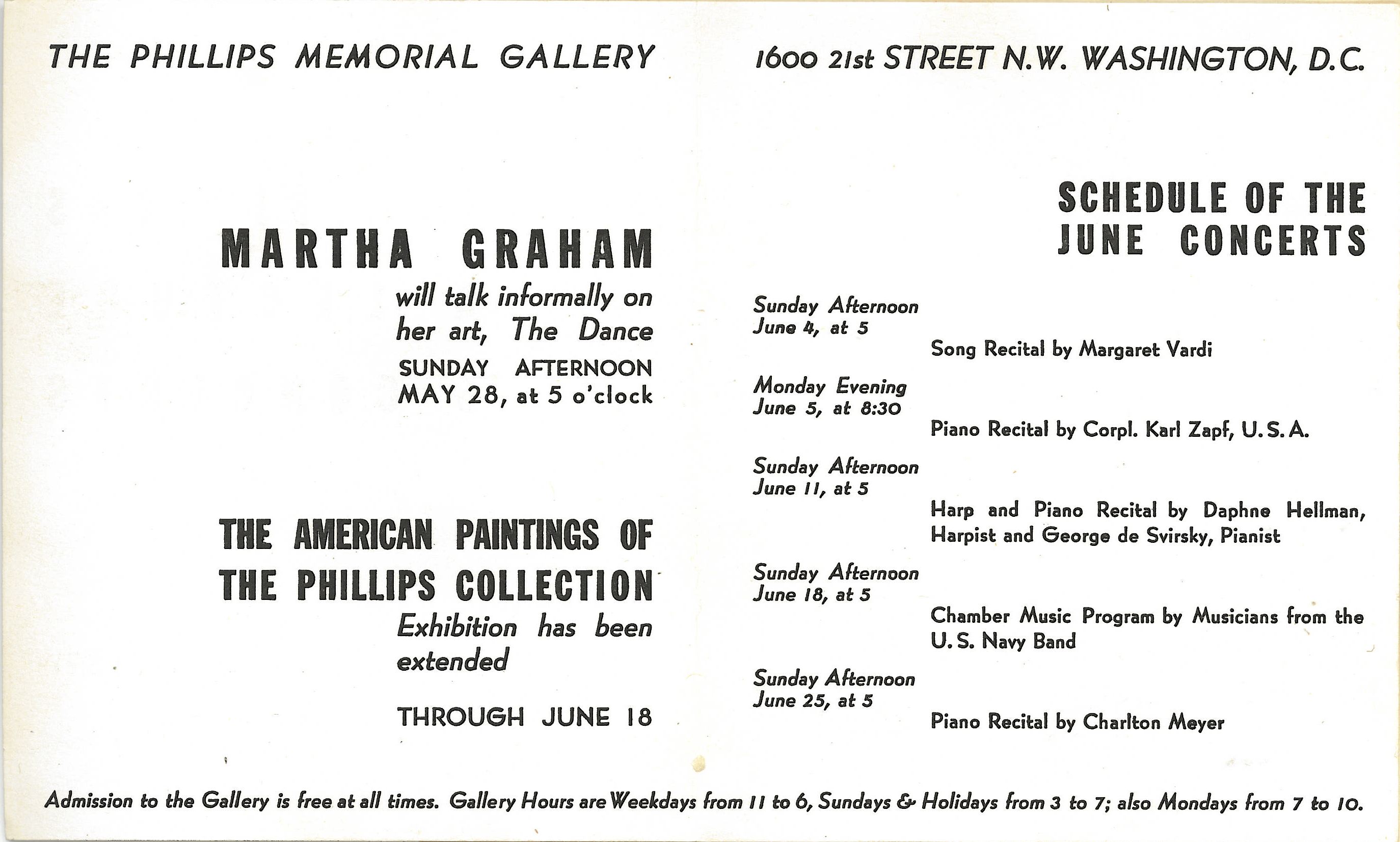C. Brian Williams, founder and director of Step Afrika!, guest blogs about the dance company’s new performance series inspired by Jacob Lawrence’s The Migration Series.

Jacob Lawrence, The Migration Series, Panel no. 1: During World War I there was a great migration north by southern African Americans, 1940-1941. Casein tempera on hardboard, 12 x 18 in. The Phillips Collection, Washington, D.C. Acquired 1942. © 2010 The Jacob and Gwendolyn Lawrence Foundation, Seattle / Artists Rights Society (ARS), New York
Step Afrika! opens on June 15 at the Atlas Performing Arts Center for an incredible partnership with The Phillips Collection around Jacob Lawrence’s iconic The Migration Series (1941).
And I couldn’t be more nervous . . .
For seventeen years, I have been leading Step Afrika! around the world, performing for tens of thousands from Maine to Madagascar. Yet the chance to dance in response to such a legendary painter’s work is both humbling and exhilarating at the same time.
This will be a first-time merger for Step Afrika! and the visual arts world, something I have longed to do for years. I have always been a fan of Jacob Lawrence’s paintings, of course, and his outstanding role in documenting American culture. I love it when artists not only create great works but also contribute something to the historical record, giving us new ways to reflect on our history as a people and nation.
Lawrence’s work embodies that for me and is THE inspiration for our performances from June 15-26. For the past seven months, we have been studying intensely the Great Migration of African Americans in the early 1900s. I have even read some of the letters written by Southern migrants longing for a better opportunity “up North.”
Here’s one excerpt that shows the thought process that inspired over 6 million African Americans to leave the South:
Houston, Tex., April 29, 1917
Dear Sir: . . . in your last issue I saw a want ad that appealed to me. I am a Negro, age 37, and am an all round foundry man…I have worked at various shops and I have always been able to make good. It is hard for a black man to hold a job here, as prejudice is very strong. I have never been discharged on account of dissatisfaction with my work, but I have been “let out” on account of my color. I have a family and am anxious to leave here…
The early 1900s were an extremely difficult time for the country in general and particularly for African Americans. Some 35 years after the ending of slavery, black men and women continued to face considerable challenges in the South from harsh working conditions with unfair wages and the bitter reality of lynchings.
These are all issues that Lawrence dealt with in his work. How Step Afrika! incorporates them into the performance will be the challenge. It can be a tough story . . . but with tremendous beauty and inspiration as well. A perfect test for the incredible artists currently in the company . . .

Jacob Lawrence, The Migration Series, Panel no. 17: Tenant farmers received harsh treatment at the hands of planters, 1940-1941. Casein tempera on hardboard, 12 x 18 in. The Phillips Collection, Washington, D.C. Acquired 1942. © 2010 The Jacob and Gwendolyn Lawrence Foundation, Seattle / Artists Rights Society (ARS), New York

